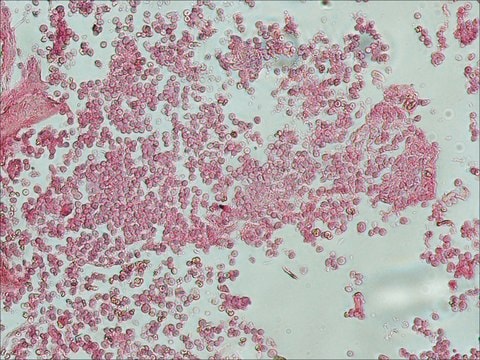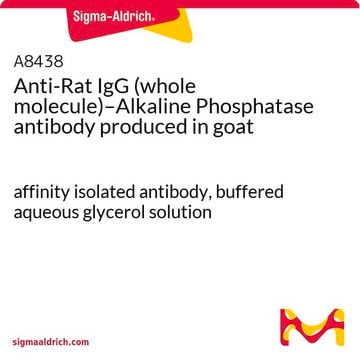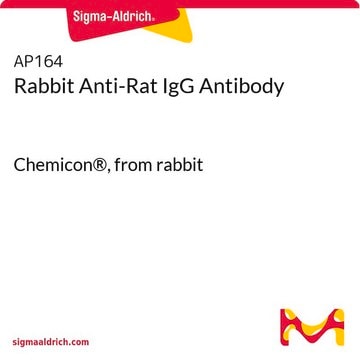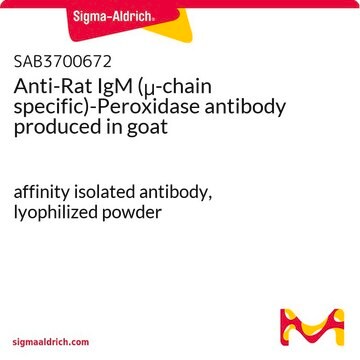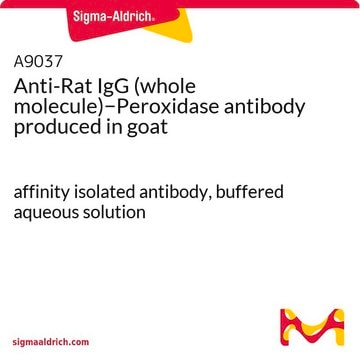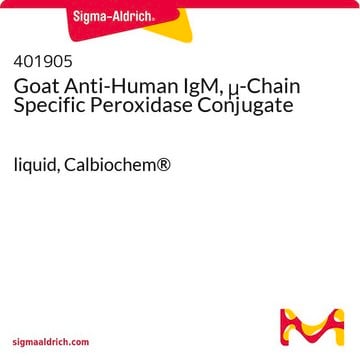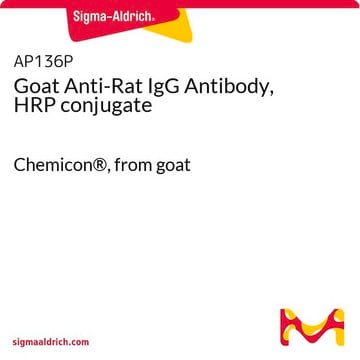R0886
Monoclonal Anti-Rat IgM antibody produced in mouse
clone RTM-32, ascites fluid
About This Item
Produtos recomendados
fonte biológica
mouse
conjugado
unconjugated
forma do anticorpo
ascites fluid
tipo de produto de anticorpo
secondary antibodies
clone
RTM-32, monoclonal
contém
15 mM sodium azide
técnica(s)
capture ELISA: suitable
dot blot: suitable
immunocytochemistry: suitable
indirect ELISA: 1:1,000
western blot: suitable
Isotipo
IgG1
Condições de expedição
dry ice
temperatura de armazenamento
−20°C
modificação pós-traducional do alvo
unmodified
Descrição geral
Monoclonal Anti-Rat IgM antibody is specific for an epitope present on the heavy chain of rat IgM. By immunoblotting, the antibody detects the denatured-reduced heavy chain molecule of rat IgM (μ-chain). The product recognizes rat IgMs derived from normal serum or myeloma proteins, but does not detect other rat immunoglobulins. In assays such as indirect ELISA and dot blot, the antibody weakly associates with guinea pig immunoglobulins. The product does not bind to IgG or serum preparations obtained from bovine, cat, chicken, dog, goat, horse, human, mouse, pig, rabbit, or sheep.
Especificidade
Imunogênio
Aplicação
- indirect ELISA (1:1,000)
- immunocytochemistry
- immunohistochemistry
- dot blot
- immunoblotting
Ações bioquímicas/fisiológicas
forma física
Armazenamento e estabilidade
Exoneração de responsabilidade
Não está encontrando o produto certo?
Experimente o nosso Ferramenta de seleção de produtos.
Código de classe de armazenamento
10 - Combustible liquids
Classe de risco de água (WGK)
nwg
Ponto de fulgor (°F)
Not applicable
Ponto de fulgor (°C)
Not applicable
Certificados de análise (COA)
Busque Certificados de análise (COA) digitando o Número do Lote do produto. Os números de lote e remessa podem ser encontrados no rótulo de um produto após a palavra “Lot” ou “Batch”.
Já possui este produto?
Encontre a documentação dos produtos que você adquiriu recentemente na biblioteca de documentos.
Nossa equipe de cientistas tem experiência em todas as áreas de pesquisa, incluindo Life Sciences, ciência de materiais, síntese química, cromatografia, química analítica e muitas outras.
Entre em contato com a assistência técnica